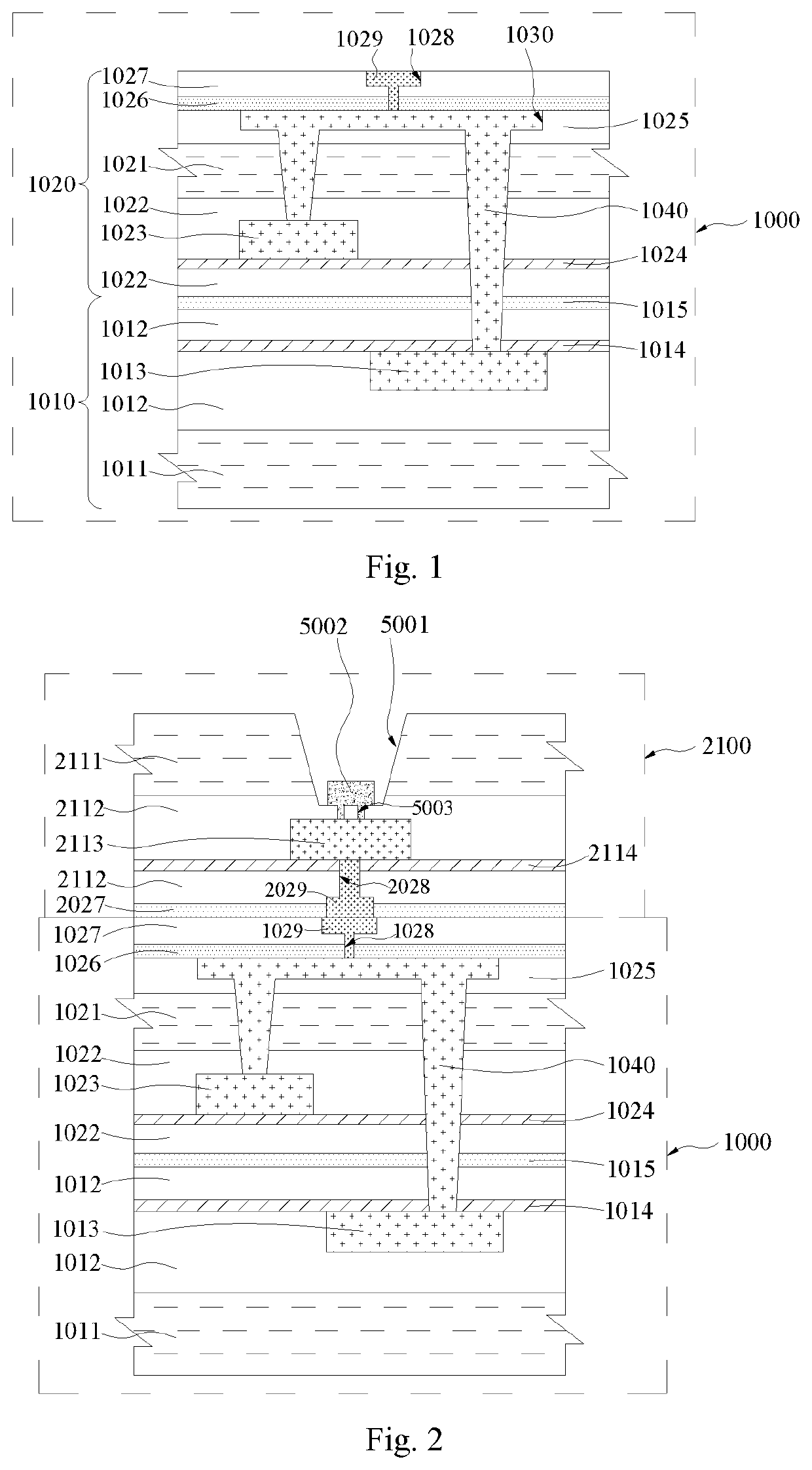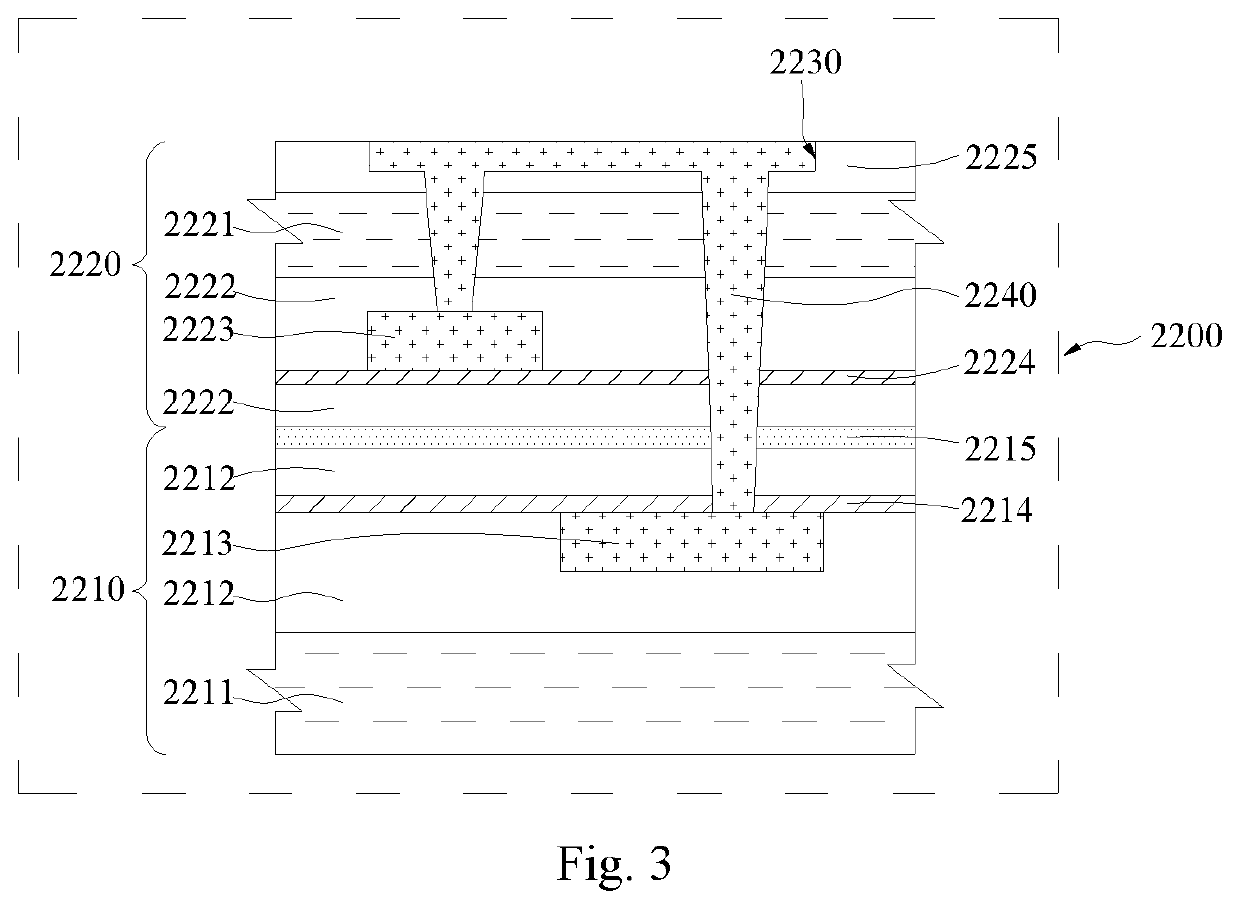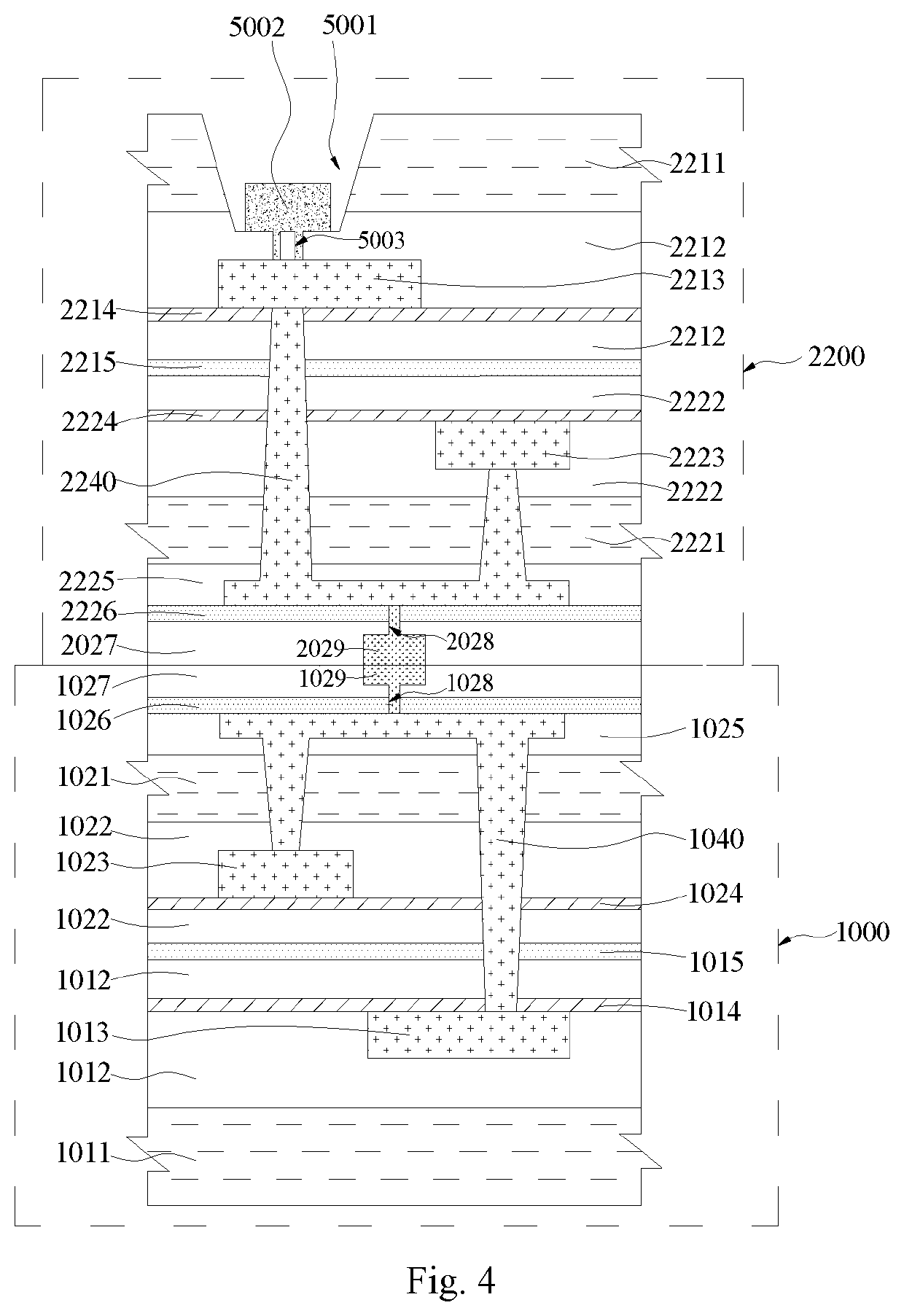Multi-wafer bonding structure and bonding method
a multi-wafer bonding and bonding technology, applied in the direction of semiconductor devices, semiconductor/solid-state device details, electrical devices, etc., can solve the problems of slow signal transmission, large signal delay and power loss, unfavorable increase of integration density, etc., to achieve short interconnection distance, low power consumption, and high signal transmission rate
- Summary
- Abstract
- Description
- Claims
- Application Information
AI Technical Summary
Benefits of technology
Problems solved by technology
Method used
Image
Examples
embodiment 1
[0050]FIG. 1 is a cross-sectional schematic view of a first unit of this embodiment, and FIG. 2 is a cross-sectional schematic view of the multi-wafer bonding structure of this embodiment. As shown in FIG. 1 and FIG. 2, this embodiment provides a multi-wafer bonding structure, including a first unit 1000 and a second unit 2100 that are bonded to each other. The first unit 1000 includes an upper wafer of the first unit 1020 and a lower wafer of the first unit 1010 that are bonded together, and the second unit 2100 includes a second unit wafer. In this embodiment, the lower wafer of the first unit 1010, the upper wafer of the first unit 1020 and the second unit wafer are sequentially stacked from bottom to top, and the second unit wafer serves as the topmost wafer of the multi-wafer bonding structure.
[0051]Specifically, as shown in FIG. 1, the upper wafer of the first unit 1020 includes a substrate 1021, a dielectric layer 1022 located on a surface of the substrate 1021 and a metal la...
embodiment 2
[0070]FIG. 3 is a cross-sectional schematic view of a second unit of this embodiment, and FIG. 4 is a cross-sectional schematic view of the multi-wafer bonding structure of this embodiment. As shown in FIG. 3 and FIG. 4, a multi-wafer bonding structure includes a first unit 1000 and a second unit 2200 that are bonded to each other. The first unit 1000 includes an upper wafer of the first unit 1020 and a lower wafer of the first unit 1010 that are bonded to each other. The second unit 2200 includes an upper wafer of the second unit 2220 and a lower wafer of the second unit 2210 that are bonded to each other. The upper wafer of the second unit 2220 and the upper wafer of the first unit 1020 are bonded to each other. In this embodiment, the lower wafer of the first unit 1010, the upper wafer of the first unit 1020, the upper wafer of the second unit 2220 and the lower wafer of the second unit 2210 are sequentially stacked from bottom to top. The lower wafer of the second unit 2210 serv...
embodiment 3
[0081]FIG. 5 is a cross-sectional schematic view of a multi-wafer bonding structure of this embodiment. As shown in FIG. 3 and FIG. 5, a multi-wafer bonding structure of this embodiment includes a first unit 1000, a second unit 2200 and a third unit 3000 that are bonded sequentially. The first unit 1000 includes an upper wafer of the first unit 1020 and a lower wafer of the first unit 1010 that are bonded together. The second unit 2200 includes an upper wafer of the second unit 2220 and a lower wafer of the second unit 2210 that are bonded to each other. The third unit 3000 includes a third unit wafer. The upper wafer of the second unit 2220 is bonded to the third unit wafer, and the lower wafer of the second unit 2210 and the upper wafer of the first unit 1020 are bonded to each other. In this embodiment, the lower wafer of the first unit 1010, the upper wafer of the first unit 1020, the lower wafer of the second unit 2210, the upper wafer of the second unit 2220 and the third unit...
PUM
| Property | Measurement | Unit |
|---|---|---|
| structure | aaaaa | aaaaa |
| electrical | aaaaa | aaaaa |
| dielectric | aaaaa | aaaaa |
Abstract
Description
Claims
Application Information
 Login to View More
Login to View More - R&D
- Intellectual Property
- Life Sciences
- Materials
- Tech Scout
- Unparalleled Data Quality
- Higher Quality Content
- 60% Fewer Hallucinations
Browse by: Latest US Patents, China's latest patents, Technical Efficacy Thesaurus, Application Domain, Technology Topic, Popular Technical Reports.
© 2025 PatSnap. All rights reserved.Legal|Privacy policy|Modern Slavery Act Transparency Statement|Sitemap|About US| Contact US: help@patsnap.com



